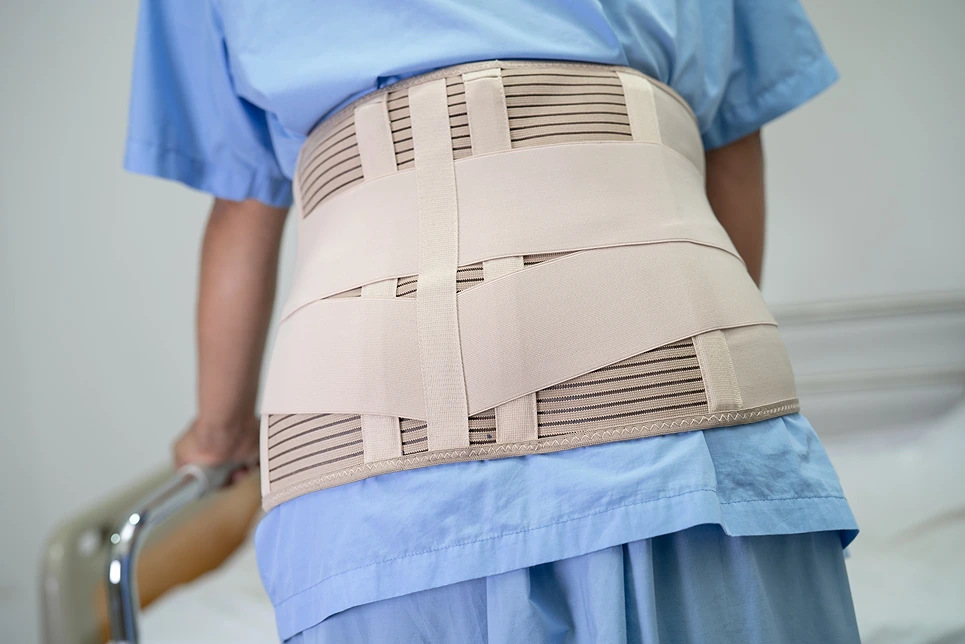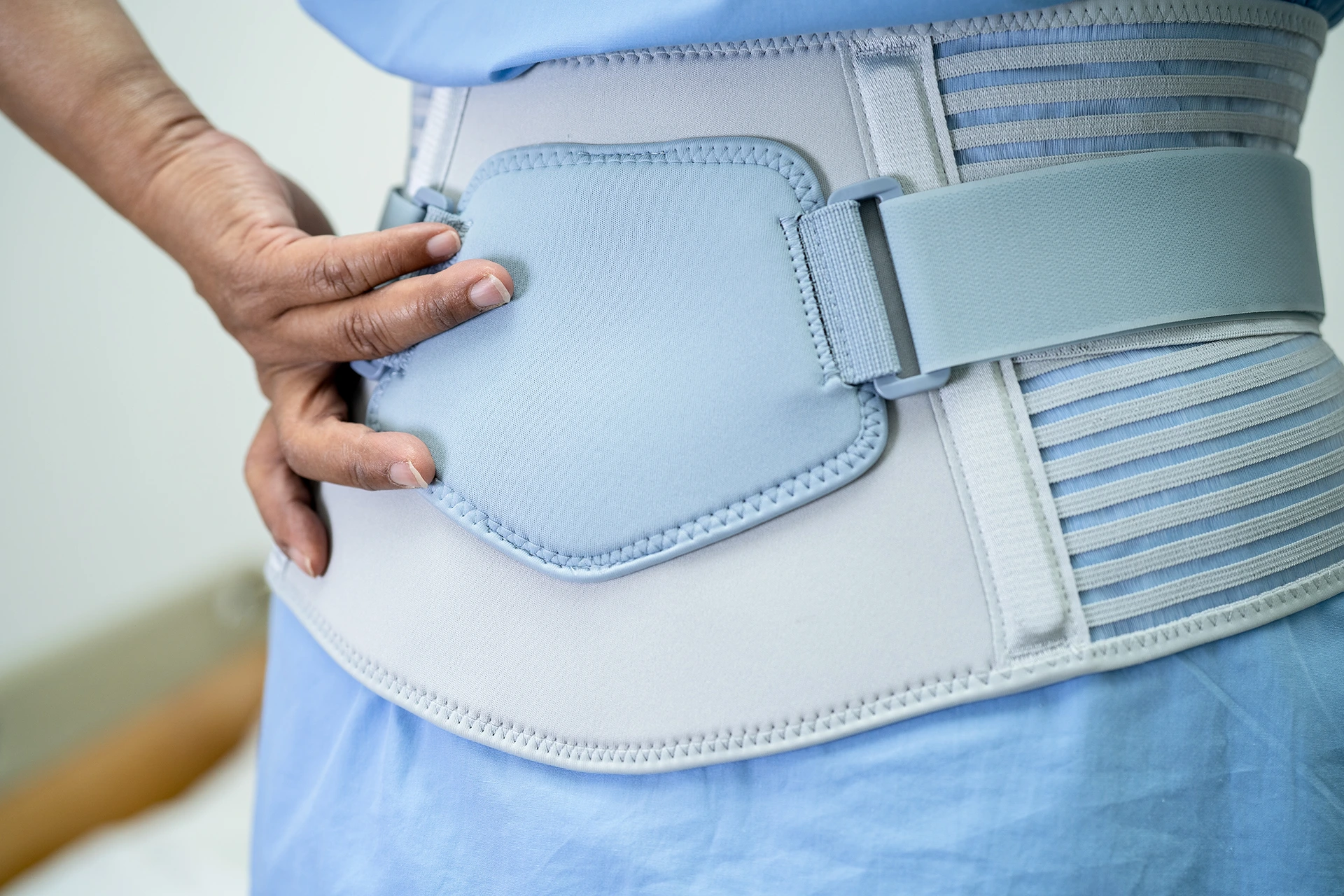Sciatica Pain and How a Sciatica Brace Can Help
Debilitating pain radiating down your leg? You may be suffering from sciatica. This common condition occurs when pressure or damage to the sciatic nerve causes agonizing symptoms. Finding relief is essential for getting back to daily activities.
A properly fitted sciatica brace could provide the solution. This comprehensive guide covers everything you need to know about sciatica braces—from how they work to the types available—to help you find the right one to reduce discomfort and restore mobility. You’ll learn key factors in selecting a brace, how to combine it with other treatments, and when to seek medical advice.
Understanding Sciatica
The sciatic nerve is the largest and longest single nerve in the human body. It originates in the lower back and travels deep through the buttocks and down each leg, extending to the feet. This nerve root transmits signals between the spinal cord and the parts of the body that control movement and provide sensation in the legs.
Sciatica occurs when the sciatic nerve becomes compressed or irritated, usually by an underlying spinal condition. This results in inflammation and often pain that radiates out from the lower back, through the buttocks and hips, and down the back of one or both legs. Common causes of sciatica include:
| 1 | Spinal stenosis | Narrowing of the spinal canal that puts pressure on the sciatic nerve roots. |
| 2 | Herniated (slipped) disc | Rupturing of one of the cushioning discs between the vertebrae, allowing it to bulge and pinch nearby nerve roots. |
| 3 | Degenerative disc disease | Gradual breakdown of the intervertebral discs, causing bone spurs that can compress nerves. |
| 4 | Spondylolisthesis | Misalignment of vertebrae that places stress on nerves. |
| 5 | Piriformis syndrome | Tightening or spasming of the piriformis muscle that irritates the sciatic nerve. |
| 6 | Injury | Direct blow or trauma to the lower spine or hip area that impacts sciatic nerve function. |
Symptoms of sciatica vary from person to person but most commonly include sharp, burning pain that begins in the buttocks or lower back area and radiates down one or both legs. This is often accompanied by numbness, tingling sensations, and weakness in the affected leg or foot.
For some, the pain comes and goes, while others experience more constant, chronic discomfort. Activities like prolonged sitting, coughing, sneezing, or bending to lift objects frequently aggravate sciatica pain. Without proper treatment, the symptoms can worsen over time and greatly interfere with regular function and quality of life.
The Science Behind Sciatica Braces
Sciatica braces are designed to provide targeted compression and added support around the lower back, hips, pelvis, and upper legs. This helps take pressure off the irritated sciatic nerve by stabilizing muscles and joints, limiting certain motions, improving posture and alignment of the spine, and promoting healing.
Wearing a sciatica brace can also provide a gentle, continuous low-level stretch that relieves tension in muscles, tendons, and ligaments that may be contributing to nerve compression. The added compression to the lower back and pelvic region maximizes contact between soft tissue structures, promoting better alignment.
Many sciatica braces also have flexible stays or reinforcement bands built into them. These semi-rigid components provide extra stability and resistance. However, they still allow for a full range of movement which helps retrain proper muscle firing sequences.
The tailored compression applied by a sciatica brace enhances circulation and reduces localized swelling that could be putting pressure on nerve tissues. The improved blood flow assists with cellular repair and recovery. Proper sciatica brace use also limits motions known to increase nerve impingement, providing symptom relief.
For optimal results, it’s crucial to select a sciatica brace constructed with high quality, breathable materials. The proper fit is also key – a brace that shifts excessively or pinches will fail to provide the needed support. Working with a knowledgeable healthcare provider helps ensure appropriate sciatica brace selection and use.
Types and Brands of Sciatica Braces
There are a variety of sciatica brace styles and options available depending on your specific pain patterns, needs, and preferences. Common types include:
Hip Brace for Sciatica Pain Relief
This style of lower back and hip support brace is designed to target sciatic and piriformis syndrome discomfort. The brace wraps around the lower back/pelvis and has two padded bands that extend down over the hips. Dual adjustable straps allow you to modify the compression level as needed. This type of hip brace limits hip flexion but still allows for a full range of motion.
Be Active Plus Acupressure System
This sciatica brace applies gentle pressure to acupressure points related to sciatic pain relief. It has an adjustable lumbar pad with built-in magnets and a strap that wraps around the upper thigh. The lightweight, breathable design makes it comfortable for extended wear. The Acupressure System brace is latex-free and can be worn under clothing.
Lumbosacral Back Brace
This rigid style of brace incorporates molded plastic or metal stays on the sides that extend from the Pelvis up along the spine to the lower rib area. A lumbosacral brace immobilizes the lower back while providing compression and promoting proper spinal alignment. This helps take pressure off compressed nerve tissues.
SacroLoc Back Brace
The SacroLoc brace has a wide lumbar belt that wraps around the lower back area and flat stays that contour along the sacral/pelvic region. It is specifically designed to immobilize the sacroiliac joints on either side of the lower spine, providing stabilization and pain relief resulting from sacroiliac joint dysfunction.
Decompression Back Braces
These rigid braces are contoured to hold the spine in a neutral, elongated position with the shoulders back. By providing spinal traction and relieving compression on nerve roots, these braces can decompress irritated nerves and reduce sciatic pain. They need to be properly fitted by a medical provider for maximum benefit.
Factors to Consider When Choosing a Sciatica Brace

There are several important factors to take into account when selecting the right sciatica brace for your needs:
Assess Your Pain Patterns
Consider where your sciatic pain originates, where it radiates, and if it is isolated to one side or bilateral. This will help determine the brace placement and style that will offer you the most targeted pain relief and support. Also note when your pain is most intense – is it constant or are there specific triggers? This can influence the brace rigidity and amount of restriction required.
Focus on Breathable Fabrics
Look for sciatica braces made of lightweight, breathable and flexible materials that contour and move with you. Materials like stretchy spandex blends maximize comfort for extended wear while still providing compression. Make sure any plastic or metal components are padded well so they don’t cause skin irritation.
Determine the Right Brace Rigidity
Opt for flexible sciatica braces if you require a normal range of motion for work or daily activities. Those with moderate to severe sciatica pain may benefit more from rigid braces that immobilize the back and restrict flexion/rotation. If your pain fluctuates, consider a brace with removable rigid panels or plastic stays.
Consider Your Lifestyle and Needs
Your activity levels and daily functions should factor into choosing the right sciatica brace. Opt for low profile braces if you need something discreet for work. Look for moisture wicking, breathable braces if you’ll be active and sweaty. Those with more severe mobility issues may want a brace that extends down over the pelvis for extra support.
Get the Proper Fit
It’s crucial that your sciatica brace fits snugly without pinching or digging in. Measure your waist and hip circumference to select the accurate size. Your healthcare provider can help ensure the brace properly supports your back and pelvis without restricting breathing or circulation. They may recommend custom braces molded specifically for your body.
Additional Treatment and Prevention Tips
While a properly fitted sciatica brace can provide significant relief for many, it’s most effective when paired with other treatments. An integrative approach maximizes sciatica management. Additional strategies include:
Perform Sciatica Exercises and Stretches
Specific exercises that stretch tight muscles and strengthen the core can take pressure off compressed nerves. Try cat-cow stretches, knee-to-chest poses, thigh stretches, and other gentle movements a physical therapist recommends. Perform them regularly, but take care not to overdo it during acute flare-ups which could worsen inflammation. Low-impact activities like walking, swimming, or stationary cycling are also beneficial for reducing sciatic and back pain.
Use Alternative Therapies
Applying heat packs or cold compresses to tense muscles can alleviate spasms and inflammation. Massage therapy also loosens muscle tissues restricting nerves. Acupuncture and electrical nerve stimulation are additional options for reducing sciatic nerve pain signals.
Improve Posture and Body Mechanics
Practice correct posture when sitting, standing and moving to keep the spine properly aligned. Avoid activities that aggravate sciatica like heavy lifting or excessive sitting. Adopt ergonomic solutions for your workspace.
Get Orthotics
Custom shoe inserts help correct biomechanical issues causing back and hip pain that lead to sciatica. Prescription orthotics provide arch support and promote proper foot/leg positioning.
Try Non-Steroidal Anti-Inflammatory Medications
Over-the-counter NSAID pain relievers like ibuprofen can temporarily alleviate acute sciatic flare ups and reduce inflammation. Always consult your medical provider before taking any new medications.
Explore Epidural Steroid Injections
For severe sciatica pain not responding to other treatments, epidural steroid shots deliver anti-inflammatory corticosteroids directly to the spinal nerve roots. While not always permanent, they can offer months of pain relief.
Consider Surgery
If there is an identifiable compressed nerve root or herniated disc that’s unresponsive to conservative treatment, your doctor may suggest surgery to remove the source of compression.
Consult a Healthcare Provider
Partnering with a qualified healthcare professional is key for assessing sciatica and determining the optimal treatment plan. Be sure to:
- See your primary care physician for an initial evaluation, diagnosis confirmation, and to rule out any serious underlying causes.
- Get a referral to a spine specialist or orthopedist for further imaging, assessment of your spine’s structure, and to discuss surgery if warranted.
- Consult a physical therapist to identify exercises, stretches, and posture corrections specific to your situation.
- Work with a doctor or brace specialist to get properly fitted for the right sciatica brace and learn how to use it safely.
- Consider seeing a massage therapist, acupuncture or chiropractor for additional pain relief and muscle release techniques.
- Communicate regularly with your healthcare team regarding your progress and any changes in pain levels. Be open to adjusting therapies as needed.
Having a coordinated team of professionals skilled in sciatica treatment will ensure you get the most effective solution tailored to your particular symptoms and anatomical makeup. Don’t hesitate to ask questions and be actively involved in designing your management plan.
Takeaway

If you suffer from the debilitating pain of sciatica, exploring the use of a tailored sciatica brace can provide meaningful relief and improve your mobility. When combined with other therapies as part of a comprehensive treatment approach, a properly fitted sciatica brace may significantly reduce your nerve-related back and leg pain.
This guide outlines the key considerations for choosing the optimal sciatica brace based on your symptoms and lifestyle needs. The goal is to improve your function and quality of life as you learn to manage this challenging condition. Take steps today by consulting your healthcare providers regarding the integration of a sciatica brace into your existing or new treatment plan. With their guidance and your patience through the process, you’ll be on your way to experiencing less sciatic discomfort.
Connect with Experts Through Kaly
Kaly offers remote access to doctors, chiropractors, physical therapists, and other specialists who can provide personalized evaluations and therapy plans to find relief from sciatica. Connect privately and securely via video chat to get expert advice on braces, exercises, medication, injections, and other techniques to manage your sciatic nerve pain. Sign up for Kaly today to take control and start feeling better.
